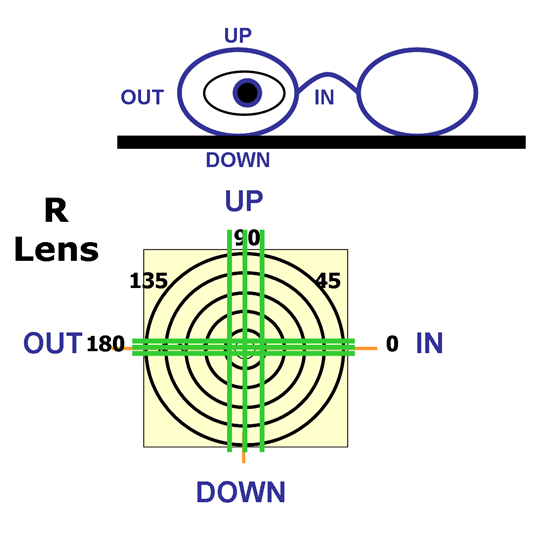
|
When checking a prescription, most opticians have an easy time finding and dotting a lens optical center. The center of the lensometer target is moved until it is in the center of the eyepiece reticle.
Often the prescription that includes prescribed prism ends up passed to someone else with the words "Here, you do this." It's really just as easy to center a lens on the point of prescribed prism as it is to center it at the optical center.
Prism is required when the line of sight must be changed to ensure binocular vision i.e., one fused image from both eyes. Prisms are used to move an image depending on whether the patient has a phoria (tendency of the eye to turn) or tropia (a turned eye). In the illustration on the right, the center of the lensmeter target (lines) is placed on the center of the reticle (concentric circles). This means that the lens is aligned with the on the lensmeter with the optical center along the optical axis of the lensmeter. Then the inking device can conveniently dot the optical center line, the place where the lens has no prism.
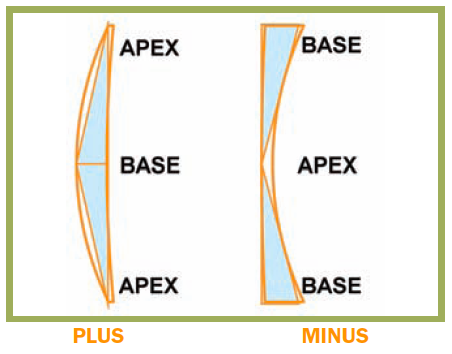
|
When a prescription specifies prism, it specifies the amount of prism, in prism diopters, and the direction of the base (thickest part) of the prism. That means that the lens will be placed with that point of prism at the patient's PD, rather than the point of no prism, the optical center.
Remember, all lenses are prisms i.e., plus lenses are two prisms base to base, minus lenses are prism apex to apex.
The place where the prisms join is the point of no prism i.e., the optical center.Verifying prescribed prism is simple; locate the target center, the point where the mires cross at the point of prescribed prism. The target always moves in the direction of the base and position is dependent on whether its a right or left lens.
When patients look through plus lenses, the base is located at the optical center; in minus lenses, the base is located
at lens edge away from center. The place where prisms join is the point of no prism.
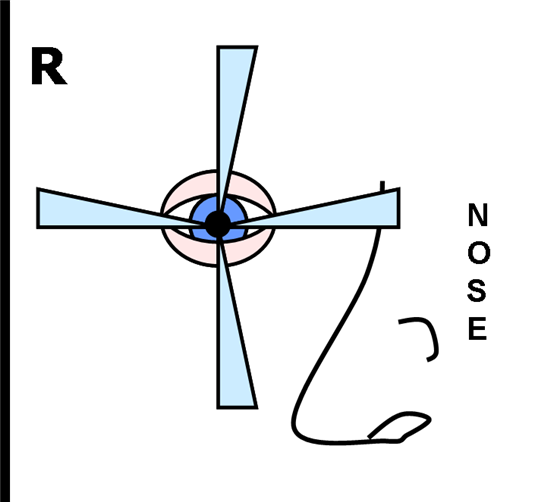
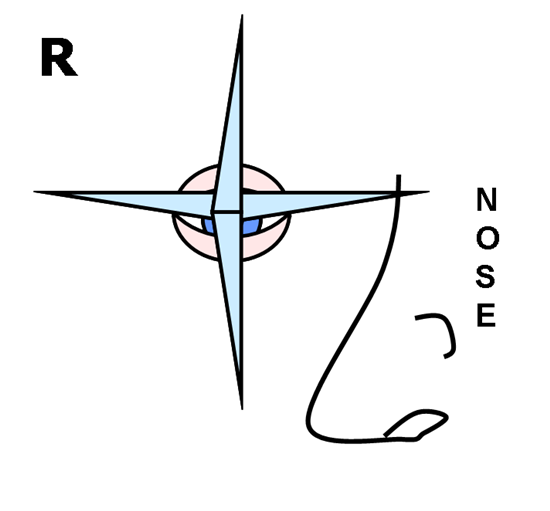
NO prism, lenses are centered at the lens' optical center.
The illustrations below show the location of the base in prescriptions with prescribed prism.
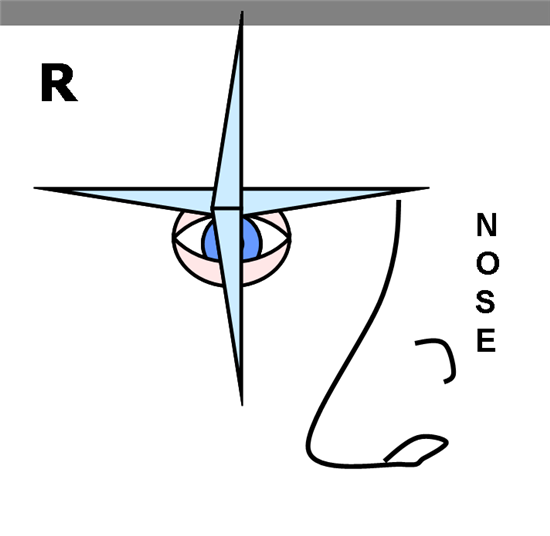 |
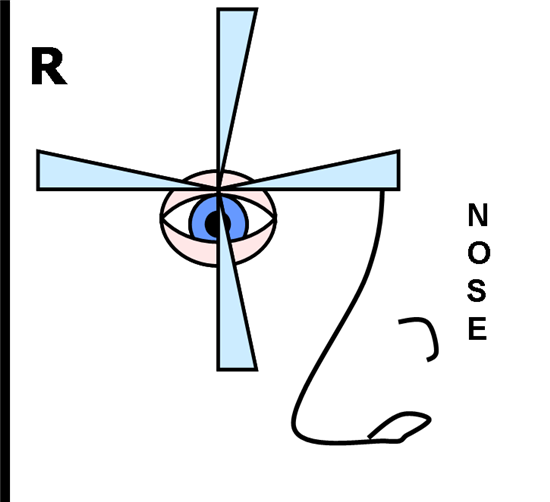 |
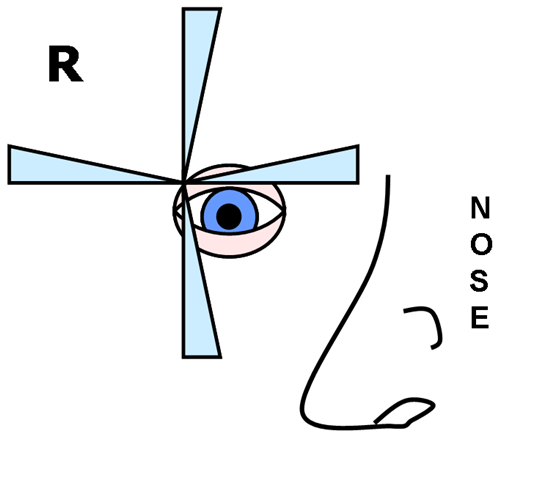 |
|
Plus lens, Base Up |
Minus lens, Base Down |
Minus lens, Base In and Base Down |
Verifying prescribed prism is simple; locate the target center, the point where the mires cross at the point of prescribed prism. The target always moves in the direction of the base and position is dependent on whether its a right or left lens.For example, in a right lens, 2 prism diopters, base out would look like this.
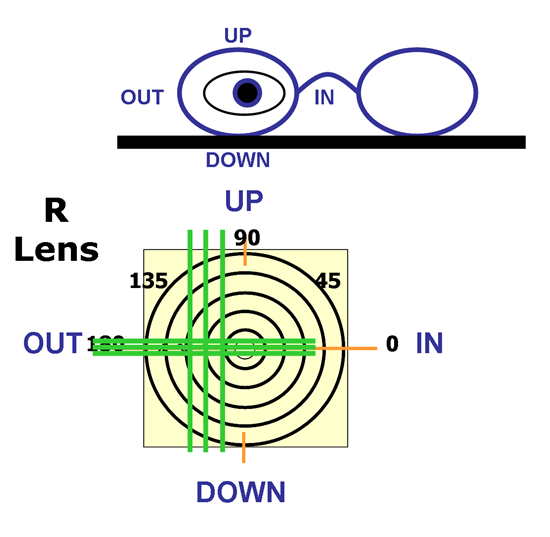
The illustrations below show the location of the base in a variety of prescriptions with prescribed prism. Remember the location of base in or base out is determined by right and left. In is always on the nasal side and out is always on
the temporal side of center.
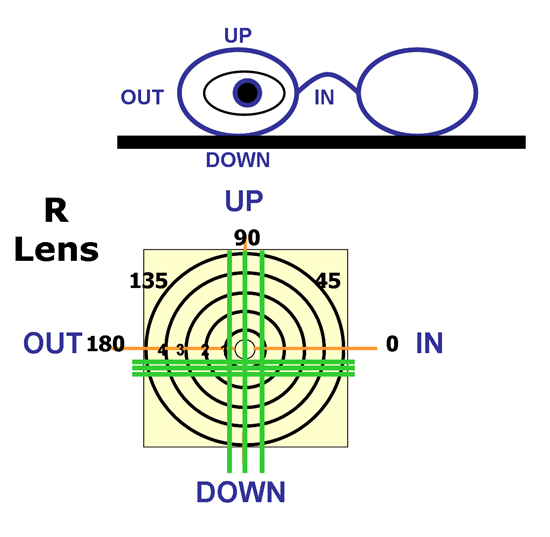 |
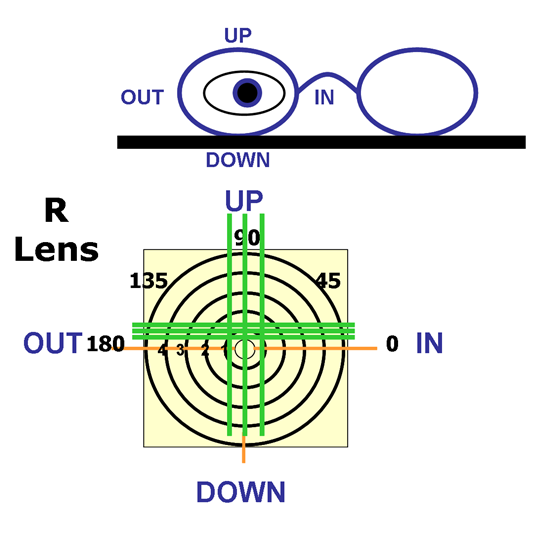 |
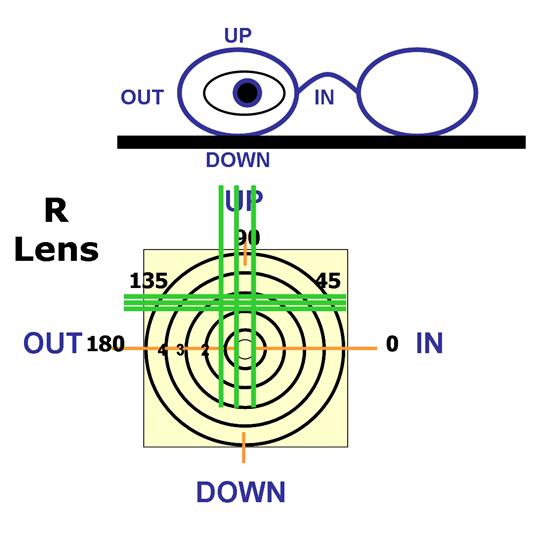 |
|
1 Base Down |
1 Base Up |
0.5 prism diopters Out, 2.5 prism diopters Up |
PRISM AND CYLINDER Rx's
Locating and verifying prism, in a manual lensmeter, becomes more difficult when the target is formed by a cylinder prescription and even harder to visualize when there is an oblique cylinder axis. At axes near 90 and 180, the vertical and horizontal lines help to align the location of the prism. In cylinder lenses the sphere and cylinder lines are visible separately and the target center and point of prescribed prism must be found by rotating the two powers into focus. In the example below, the Rx is +1.00-2.00 x 90 and 1 prism diopter base down.
First, focus the sphere lines and move the center line to 1 base down, then focus the cylinder lines and align the center cylinder line at the center of the reticle. Rotate the power drum back to see if the sphere lines ahave moved from the original place and adjust them if necessary. Repeat the focusing back and forth so that the position where the two center lines cross are at the 1 prism diopter point on the reticle. Excellence comes from practice.
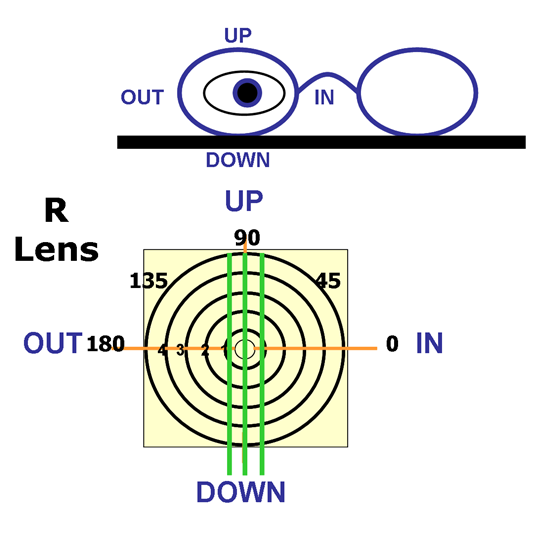
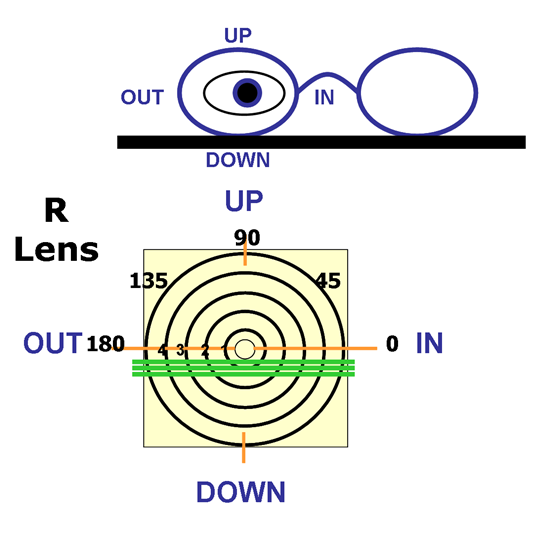
Again, in non-prism prescriptions the optical center or point of no prism is located at the patient's pupillary distance (PD); in prescriptions with prescribed prism, the point of prescribed prism is located at the PD.
FACTS ABOUT PRISM
- Usually horizontal prism is either base in (BI) in both eyes or base out (BO) in both eyes.
- Usually vertical prism is downward in one eye and upward in the other.
- When the prism indicated by the Rx varies from what is "usually" done, a call to the prescribing doctor may help you avoid making an error in ordering.
- When horizontal prism—base in (BI) or base out (BO)—is specified, try to avoid decentration as much as possible by careful frame selection.
- When vertical prism, base up (BU) or base down (BD) is specified, avoid using a frame with a deep (large B measurement) lens shape.













